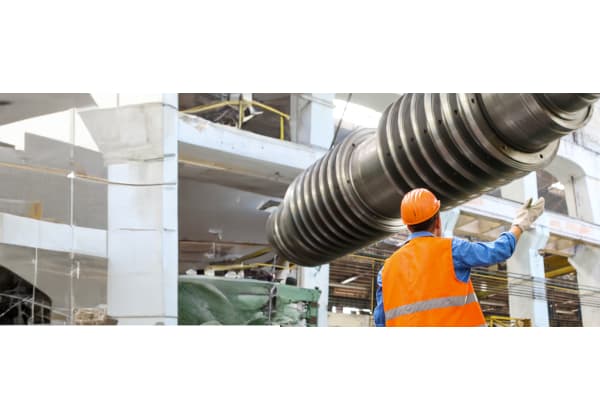- Published 12 Feb 2024
- Last Modified 12 Feb 2024
- 6 min
Electrical Measurement Safety
Electrical measurement is crucial to maintenance personnel in industrial environments. This guide explains how to thoroughly prepare for carrying out test and measurement of electrical parameters in the workplace – and keep workers safe in the process.

Reviewed by Stephen Bettles, Technical Support Engineer (January 2024)
To maintain equipment that relies on electricity, it’s often necessary to measure parameters such as voltage, current, and resistance using electrical measurement tools. It’s vital to maintain electrical safety during these activities to protect staff and equipment and reduce legal liability. This guide explains how to perform electrical testing safely and securely.
Electrical Hazards
The principal electrical hazard when taking electrical measurements is contact with live parts. Contact with live parts can cause shock, burns, or even death. The damage inflicted by a shock depends on many factors, including the voltage, the path the current takes through the person’s body, and the shock’s length of time. Other examples of electrical hazards include arc flashes (light and heat produced from an electric arc that may cause damage, fire, or injury), fires or explosions caused by faulty wiring, electrocution or burns due to inadequate PPE for electrical work.
Electrical Safety Best Practice
Industrial electrical current measurement safety should take into account a number of factors:
Assessing the Environment
Start by determining any examples of electrical hazards in the working area. This is normally done via a risk assessment. Inspect electrical equipment and systems for signs of damage or incorrect/inappropriate installation. Identify any exposed wiring, poor grounding, or overloaded circuits. It may be necessary to repair or replace electrical equipment if observable faults are found.
The UK Health and Safety Executive (HSE) lays out the format of a formal risk assessment of the working area that accounts for any electrical hazards. The risk assessment should include details of who may be harmed, the level of risk and how it has been determined, and the precautions taken. The risk assessment should include the type of electrical equipment used, how it is used, and the environment.
Electrical hazards can be mitigated by workers donning the correct electrical PPE as defined by PPE regulations. For example, flame-resistant clothing can prevent harm caused by arc flashes. Insulated boots and gloves may prevent personnel from becoming a conduit for current, guarding against electric shock.
Wearing PPE
Your electrical PPE inspection checklist should include:
- Electrically insulated hard hats: An insulated hard hat can prevent current from flowing through the head to the rest of the body as well as fulfilling the traditional role of protecting against bumps and falling objects
- Safety glasses: During electrical work, if sparks, molten metal, or other debris flies, the appropriate eyewear protects personnel
- Face shields: Face shields are invaluable for protecting the face from exposure to arcing energy in an arc flash incident. Face shields may come as an entire headpiece or an attachment such as a visor for a hard hat
- Insulating gloves: Insulated gloves protect against shocks and burns and come in different voltage ratings. Use gloves that are appropriate for the voltage you are working with
- Safety shoes: Safety shoes feature toughened toe caps and provide feet protection against falling objects and slips and trips during electrical work. Dielectric overshoes are also available. These provide extra protection against electrical hazards.
- Flame-resistant clothing: Workers can be kitted out in coveralls, trousers, shirts, and jackets that are flame-resistant, guarding against burns from an electrical fire or arc flash. Arc flash suits are complete flame-resistant suits including face shields that are comfortable to wear for extended periods. Use arc flash-rated PPE when working with high voltages
Correct Electrical Measurement Tools
It’s also important to use the correct electrical test tools for jobs such as electrical current measurement. Test and measurement tools measure a range of values including current, voltage, resistance, and power. The principal tools engineers use to make measurements include ammeters (which measure current), ohmmeters (which measure resistance), and voltmeters (which measure the potential difference between two points of a closed electrical circuit). Other measurement tools include multimeters, which are capable of measuring multiple different parameters including voltage, resistance, and capacitance, and thermal imaging cameras to detect hot spots in cabinets.
Lighting the Scene
Before performing electrical testing, engineers should ensure that the environment is appropriately lit so that any hazards are clearly visible. This can be via existing installed area lighting, temporary site lighting, or even head torches in confined spaces. For example, it should be readily possible to distinguish different colours of wiring insulation. There should also be adequate emergency lighting in the event of unexpected power loss.
Not Working Alone
It poses an additional risk if you work alone in an industrial environment when carrying out electrical work. If there is an incident, it is good to have someone there who can come to your aid, which is not the case if you are working in isolation. Many domestic electricians, of course, work alone. But in particularly hazardous industrial environments, having a fellow electrical maintenance engineer on hand is good practice when it comes to electrical safety.
De-Energised Circuits
It may not always be possible when measuring electrical properties, but the best means of guarding against injury from electricity is to remove the source of power from the equation altogether by de-energising the equipment. This eliminates the possibility of shock. Machinery should also be marked as de-energised using the correct lockout / tagout procedure, which will prevent it from being accidentally re-energised. The circuit should also be tested for voltage after lockout with a known, good tester prior to any work commencing to ensure the circuit is really dead.
Electrical Safety Checklist
Ask yourself these questions as part of an electrical safety checklist:
- Has there been a risk assessment of the working area?
- Am I suitably qualified/competent to be doing this work?
- Is electrical equipment properly grounded?
- Am I wearing the correct electrical maintenance PPE?
- Is the working area well-lit?
- Do I have the correct measurement tool, and is it rated for the job?
- Is there any damage to fuse boxes, circuit breakers, or other components?
- Is the wiring in good condition?
- Have I de-energised and locked out circuits where possible?
- Am I working with a companion?
Electrical Safety Regulations
The principal electrical regulations covering work with electricity in the UK are the Electricity at Work Regulations (1989), which are aimed at preventing death or injury from electrical causes in working environments, including shocks, burns, fires, explosions, and arc flashes. These UK electrical regulations put the onus on employers to provide a working environment featuring well-maintained electrical systems and to ensure any work on those systems is performed safely. The law dictates only employees with the right training, knowledge, experience, and supervision should carry out work on electrical systems.
There are many factors to account for when working with electricity. Electrical maintenance relies on the ability to measure various electric parameters, but this work should only be performed by trained personnel who are using the correct equipment and electrical PPE, and who are working in environments where everything possible has been done to ensure electrical safety.
When it comes to safety standards in industrial maintenance, RS can help you. Learn more here.
Related Articles
Related links
- A Complete Guide to Safety Goggles & Glasses
- Guide to Conductivity Meters
- Megger 1014-018 Electrical Certification Software, For Use With Android Or iOS Smartphones
- Phoenix Contact 2901560 Measuring Instrument, For Use With Measuring Device Adapter
- Why Wear Eye Protection?
- Warning Signs
- Safety Sensing & Switches
- How to Use Thread-Forming Taps


